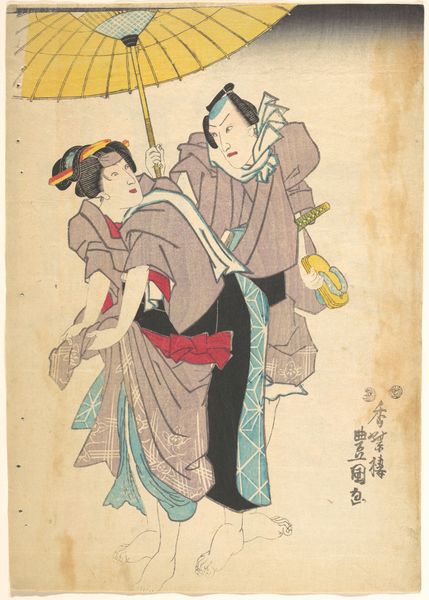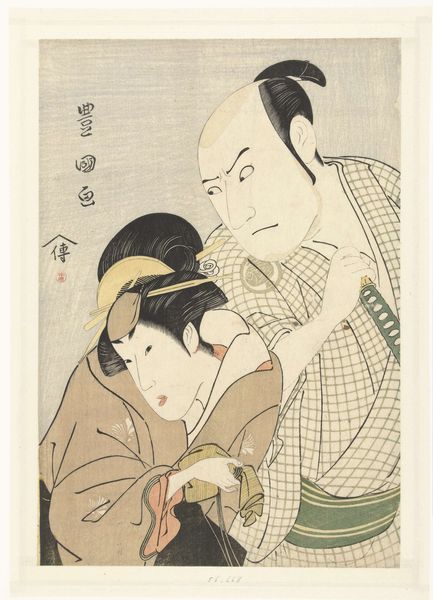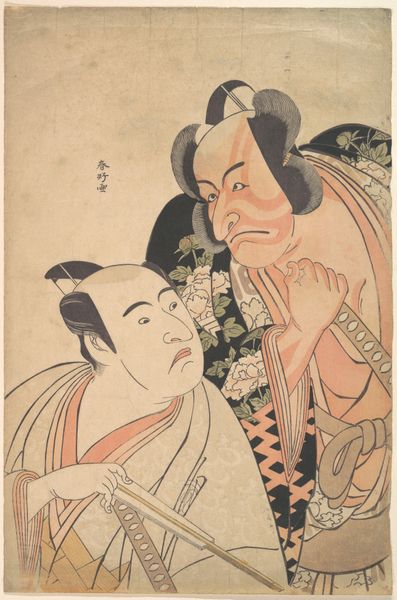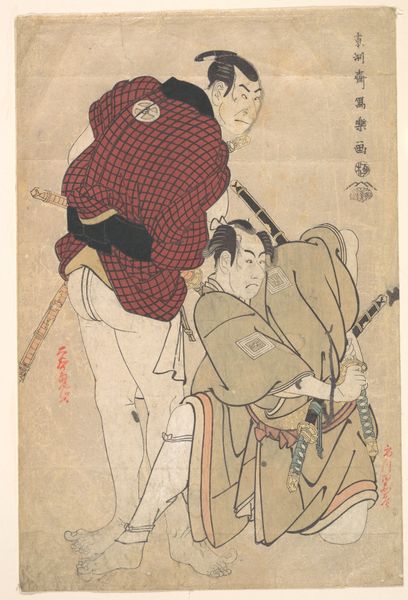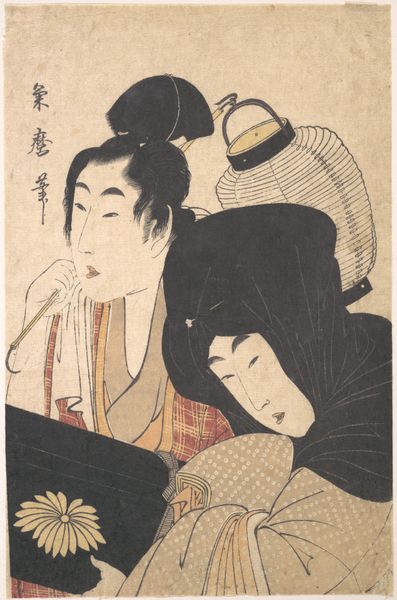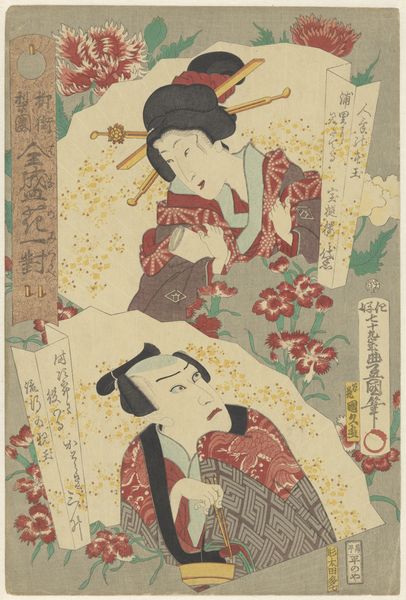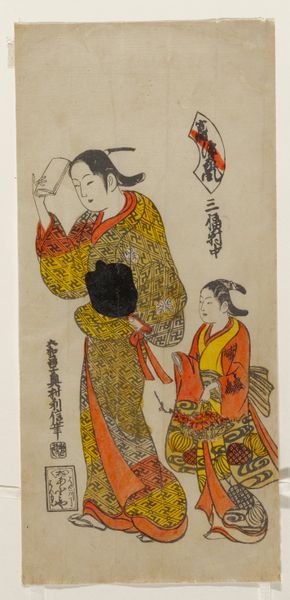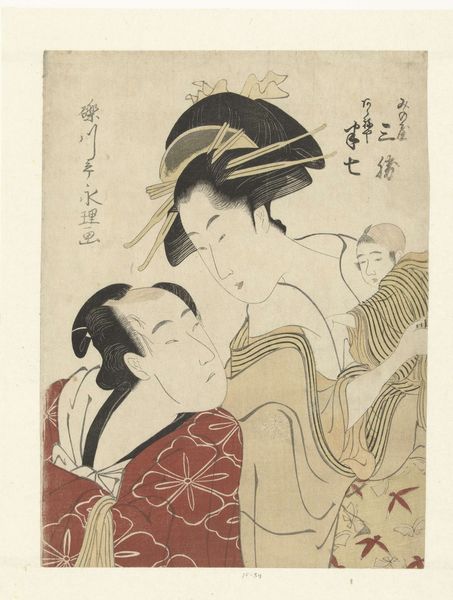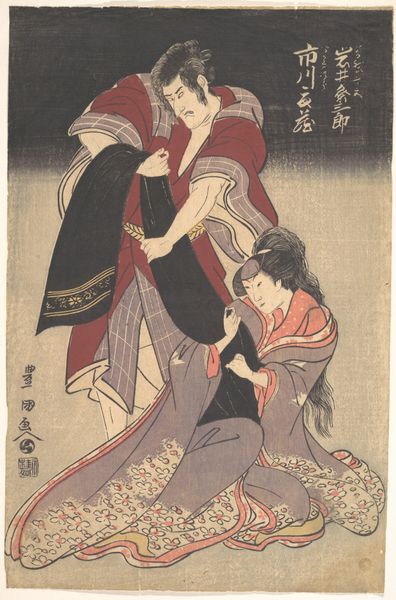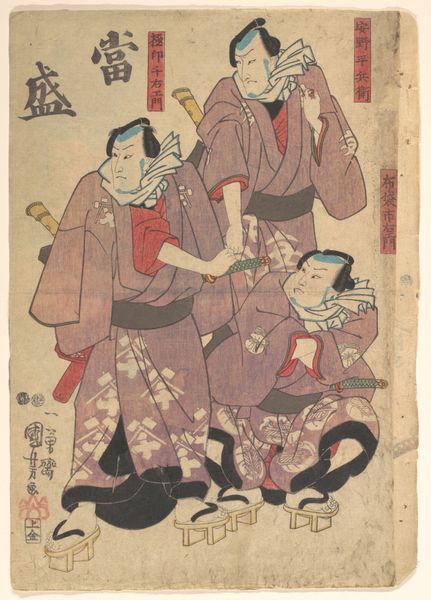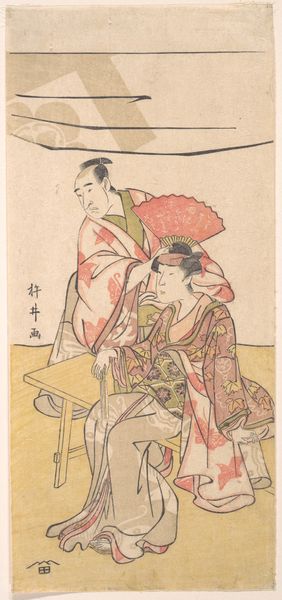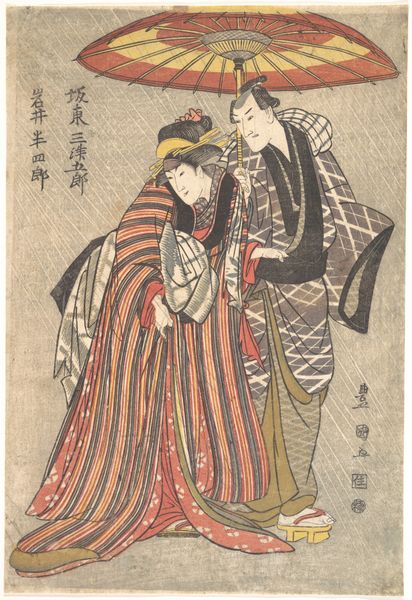
Ichikawa Komazō II (1764–1838) in the Role of Akaneya Hanshichi from the Play Hadesugata On'a Maiginu 1788 - 1808
0:00
0:00
print, woodblock-print
#
portrait
# print
#
asian-art
#
ukiyo-e
#
figuration
#
historical fashion
#
woodblock-print
#
orientalism
#
men
#
genre-painting
Dimensions: H. 14 1/4 in. (36.2 cm); W. 10 1/4 in. (26 cm)
Copyright: Public Domain
Editor: So, this woodblock print is by Utagawa Toyokuni I, made sometime between 1788 and 1808. It's a portrait of Ichikawa Komazo II, a Kabuki actor. The intricate detail of the robes, the way they’re patterned… What’s most striking to me is the flat perspective but incredibly ornate production of the textile itself. How do you see this work in terms of its materiality and the broader social context? Curator: I'm immediately drawn to the woodblock technique itself, how the material constraints shape the artistic outcome. We must consider the labor involved. These prints weren’t unique objects but products of a workshop system; many hands would contribute to the carving, inking, and printing. This materially impacts the "aura" of the piece. What does it mean for art to be produced and distributed like this at the time? Editor: It's almost like a pre-industrial form of mass production. So, does the subject matter—the actor—influence how we view the work through this lens? Curator: Absolutely! Kabuki, like woodblock prints, was a popular form of entertainment accessible to a wide audience. Think about the materials used for stage costumes versus everyday wear. The woodblock captures and recirculates that theatricality, making it available for consumption outside the theater. This reveals a great deal about the flow of capital and leisure. Editor: That connection between accessibility, performance, and material production gives me a completely different way of understanding Ukiyo-e. Curator: Exactly. Focusing on materials and production pushes us to ask different questions about value and artistic intention, broadening what we understand "art" to be at the time.
Comments
No comments
Be the first to comment and join the conversation on the ultimate creative platform.
